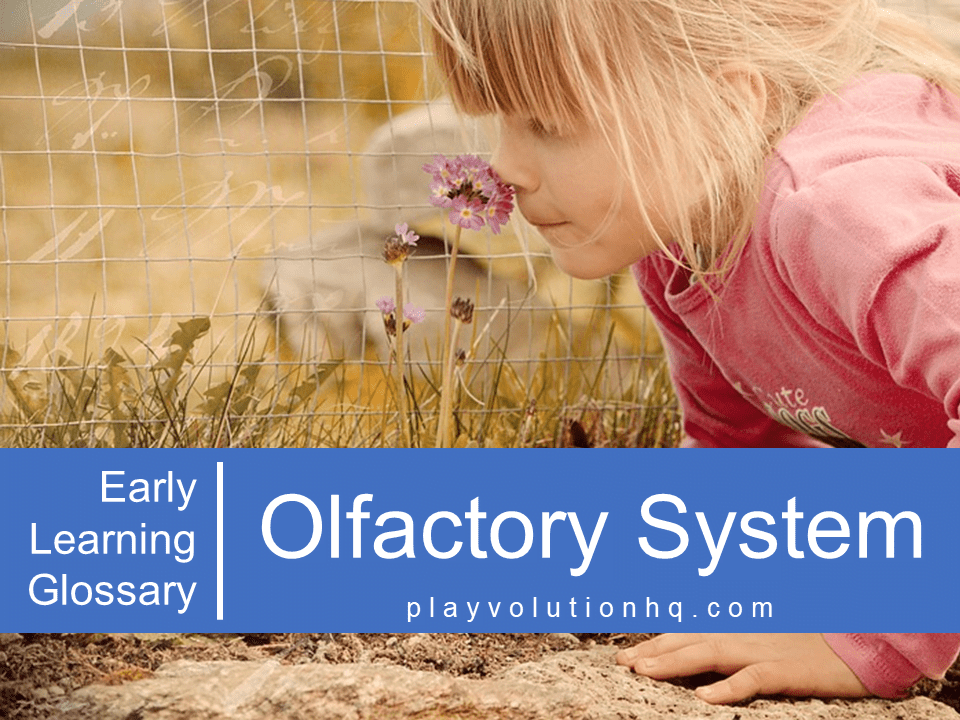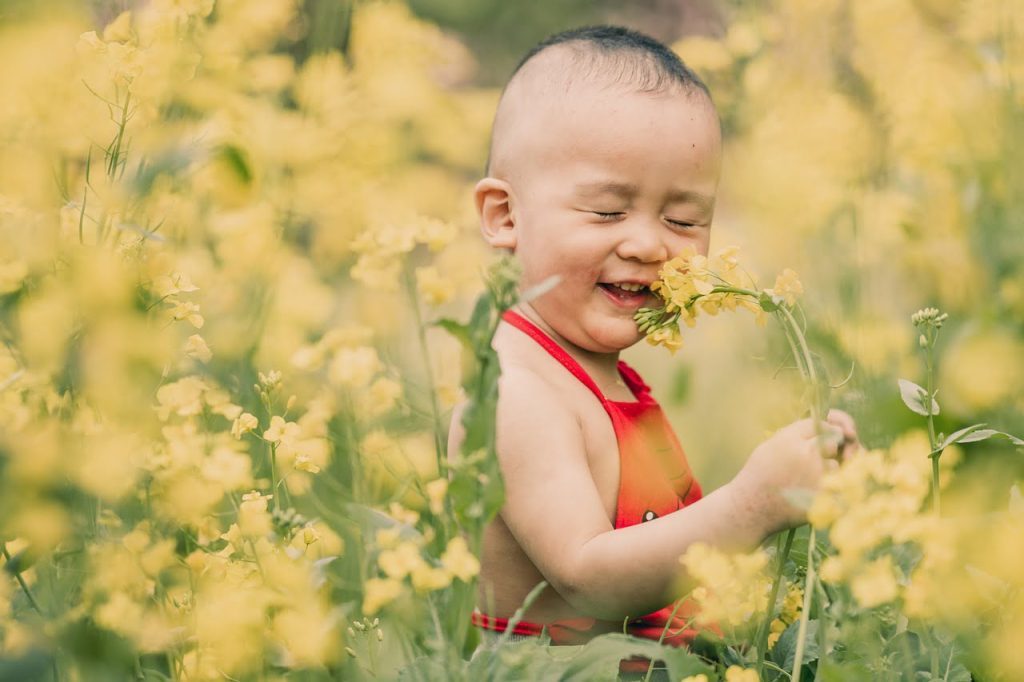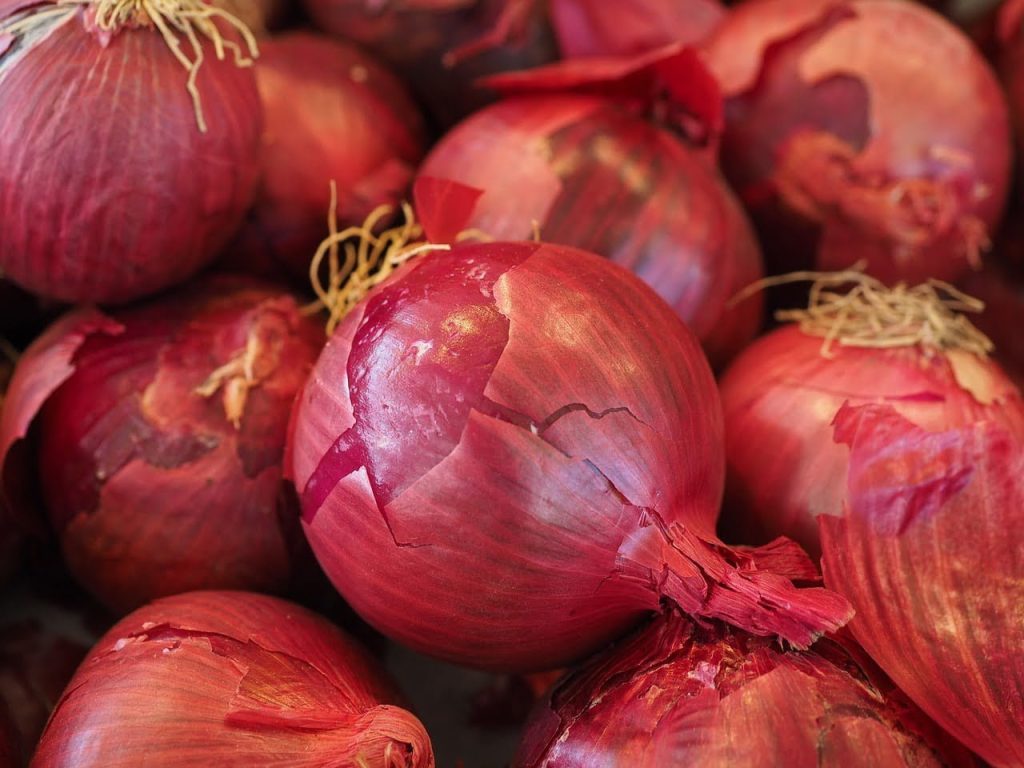
The olfactory system is the sensory system responsible for the sense of smell. It plays a crucial role in child development and early learning. It contributes to sensory development, sensory integration, emotional and cognitive processes, environmental exploration, social and cultural experiences, and memory formation. Understanding the significance of the olfactory system can help create enriching environments for children, stimulating their senses and promoting their overall development.
The olfactory system has several significant aspects:
- Sensory Development And Integration
The olfactory system begins to develop in utero and continues to develop and refine throughout childhood. Exposure to different smells and odors during this critical period helps the olfactory system mature and establish neural connections. The olfactory system is intricately connected to other sensory systems, such as taste and touch. The sense of smell contributes to the overall sensory integration process, allowing children to understand and interpret their environment more comprehensively. For example, the aroma of food can enhance the taste experience, and certain scents can trigger tactile memories or associations. - Smell Discrimination
Infants and young children have an innate ability to discriminate and recognize various smells. Research suggests that even newborns can distinguish their mother’s scent from others. This ability to discriminate and remember smells is linked to the limbic system, which is involved in emotions and memory formation. - Emotional And Cognitive Impact
Smells have a profound impact on emotions and cognitive processes. Certain odors can evoke strong emotional responses, memories, and associations. This emotional connection to smells can influence children’s learning and behavior. For instance, a positive scent in a learning environment may enhance focus and retention, while an unpleasant odor can be unpleasant and distracting. - Environmental Exploration
The olfactory system encourages children to explore their surroundings. Infants and toddlers often use their sense of smell to investigate objects and people. They may sniff and explore different scents, aiding their understanding of the world and contributing to their overall sensory and motor development. - Social And Cultural Significance
Smells are deeply intertwined with social and cultural experiences. Children learn about their environment, traditions, and customs through olfactory cues. For example, they can associate certain smells with home, family, or specific events. Cultural practices like cooking and perfuming can introduce children to various scents, contributing to their cultural learning and identity formation. - Olfactory Memory
The olfactory system has a strong connection to memory formation. Smells can create vivid and lasting memories. Children can associate specific smells with people, places, or experiences, aiding their learning and memory recall. This association between smells and memories can have long-lasting effects on cognitive development.

Olfactory System Structure
The interaction between the olfactory system and the brain is complex and involves various neural pathways. When odor molecules are detected by the olfactory receptor cells in the olfactory epithelium, electrical signals are generated and transmitted to the olfactory bulb. The olfactory bulb processes the signals and relays them to the olfactory cortex for further analysis and interpretation. In conjunction with the limbic system, the olfactory cortex reassigns meaning, triggers emotions, and retrieves associated memories.
The olfactory system is unique compared to other sensory systems because the signals bypass the thalamus, which acts as a relay center for most sensory information. This direct connection between the olfactory system and the brain allows smells to have a direct and immediate impact on emotions, memories, and behaviors.
Overall, the human olfactory system and the brain interact to detect, process, and interpret smells, creating a rich sensory experience that influences our perceptions, emotions, memories, and behaviors. The human olfactory system consists of several interconnected components that work together to detect and process smells. These components include:
- Olfactory Epithelium
Located in the upper part of the nasal cavity, the olfactory epithelium is a specialized tissue that contains millions of olfactory receptor cells. These cells have specialized receptors on their surface that detect odor molecules in the inhaled air. - Olfactory Receptor Cells
Olfactory receptor cells are the primary sensory neurons responsible for detecting odors. When odor molecules bind to specific receptors on these cells, it triggers a chemical reaction that generates electrical signals. - Olfactory Bulb
The olfactory receptor cells send their electrical signals to the olfactory bulb, a structure located at the base of the brain. The olfactory bulb acts as a relay station, where the signals are processed and transmitted to other brain regions for further analysis. - Olfactory Tract
The olfactory bulb sends processed signals through a bundle of nerve fibers called the olfactory tract. The olfactory tract carries the information to various brain regions, including the primary olfactory cortex and other areas involved in odor perception, memory, and emotional processing. - Olfactory Cortex
The olfactory cortex comprises several brain regions, including the piriform cortex and orbitofrontal cortex. These regions are responsible for analyzing and interpreting the odor signals received from the olfactory bulb. The olfactory cortex plays a crucial role in identifying specific odors, associating them with memories and emotions, and influencing behaviors and decision-making. - Limbic System
The olfactory system has strong connections with the limbic system, which is involved in emotions, memory, and motivation. The limbic system includes structures like the amygdala and hippocampus, which play significant roles in emotional and memory processing. This close association explains why certain smells can evoke strong emotional responses and trigger vivid memories.

Supporting Olfactory System Development
Through these experiences, early childhood play and exploration contribute to the development and refinement of the olfactory system. They help children become more proficient in detecting, discriminating, and associating smells, thus enhancing their overall sensory development and understanding of the world.
Parents and caregivers can play an essential role in supporting the development of the olfactory system in a child’s early years. Here are some ways they can provide support:
- Encourage Olfactory Exploration
Encouraging children to explore using their sense of smell hones their olfactory system. Provide numerous opportunities for children to encounter various odors–pleasant and unpleasant–in their environment. Whether it’s the aroma of flowers, the scent of food, or the fragrance of everyday objects, these diverse smells provide sensory input that contributes to the development of the olfactory system. Exploring different odors helps children become familiar with various scents and develop their ability to discriminate between them. Ensuring health and safety is essential. Prohibit olfactory exploration of potentially dangerous scents–like those of cleaning supplies and solvents. - Support Play
Provide opportunities for children to explore different scents during play. Olfaction is a loose part, a variable in the environment with which children can interact. For example, adding a bit of peppermint extract to play dough adds a new dimension to kneading, rolling, and smashing. You can also support smell-based games. For example, help kids create a smell-based guessing game in which a blindfolded child is presented with different items and attempts to identify them using their sense of smell alone. Such play engages the olfactory system and promotes sensory awareness, memory, and critical thinking. - Offer Multi-Sensory Experiences
Build on the previous items by supporting multi- sensory play and exploration experiences. For example, children may engage in cooking or baking activities that combine the sense of smell with taste, touch, and visual cues. These multi-sensory experiences help strengthen the integration between the olfactory and other sensory systems, enhancing overall sensory development. - Food-Related Experiences
Speaking of cooking and baking, food-related activities (preparing and consuming) provide opportunities for children to encounter a variety of smells associated with different ingredients and cooking processes. This can be as simple as encouraging kids to take a big sniff of the items on their plate before they begin eating lunch. Such experiences can be enjoyable and educational, helping the child develop a deeper understanding and appreciation of different aromas. - Explore Nature
Spend time outdoors and explore nature together. Take walks in parks, gardens, or forests where the child can encounter natural scents from flowers, trees, and other elements of the environment. This exposure to natural smells can enrich the child’s olfactory experiences and provide a connection to the natural world. - Discuss Smell-Related Feelings And Emotions
Conversing with children about pleasant and displeasing smells and related feelings, emotions, and memories contributes to the refinement of the olfactory system by strengthening the neural connections between aromas and the associated memories or experiences. Smells have a profound impact on emotions. Early childhood experiences that involve odors can evoke emotional responses and contribute to emotional development. For example, a familiar, comforting scent, such as a caregiver’s perfume or a favorite stuffed animal, can give a child a sense of security and comfort. These emotional connections help shape the child’s olfactory system and its interaction with emotional processing centers in the brain. Children form associations between smells and specific experiences or memories during early childhood. - Value Social And Cultural Experiences
Early childhood is a period of significant social and cultural learning. Children are exposed to various cultural practices, including cooking, traditional ceremonies, or cultural events, that often involve specific smells. Participating in these activities exposes children to culturally significant smells and helps them understand the social and cultural meaning attached to different odors. - Follow The Child’s Lead
Observe and respect the child’s natural curiosity and interest in smells. Encourage their exploration and provide opportunities for them to investigate smells they find intriguing. Follow their lead and provide guidance and support when needed, allowing them to develop their olfactory abilities at their own pace.
Implementing these strategies creates a supportive environment that nurtures the development of children’s olfactory systems. These activities enhance sensory development, provide meaningful and enjoyable experiences, and foster a deeper connection with their sense of smell and the world around them.
Related Posts
Find more information about the 8 sensory systems at these links:
- 8 Sensory Systems That Drive Playful Learning
- Supporting School Readiness With Sensory Integration
- Sensory Play
- Sensory Integration
Contribute content to Playvolution HQ
Brought to you by Explorations Early Learning
Thoughts On This Entry?
I’d love to hear your thoughts on improving this entry and suggestions for additional glossary additions in the comments below. You can also contact me with comments or concerns.
Browse Trainings
Post Author
Jeff Johnson is an early learning trainer, podcaster, and author who founded Explorations Early Learning, Playvolution HQ, and Play Haven.



Leave a Reply